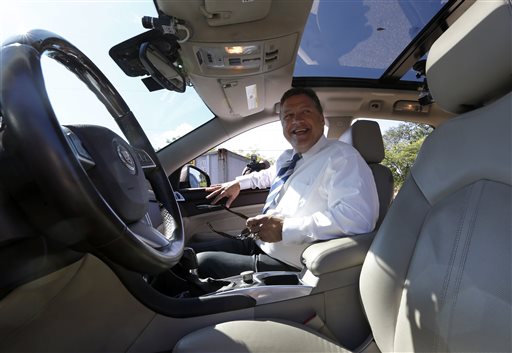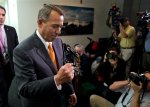It will be brought to you by the same people now bringing you Obamacare. In May, the National Highway Traffic Safety Administration published its “Preliminary Statement of Policy Concerning Automated Vehicles.” It pointed to a “continuum” of automobile development that “runs from vehicles with no active control systems all the way to full automation and self-driving.”
Videos by Rare
“Such a design anticipates that the driver will provide destination or navigation input, but is not expected to be available for control at any time during the trip,” said this federal policy statement. “By design, safe operation rests solely on the automated vehicle system.”
To be sure, in a free society, individuals could use automated vehicles to many good ends.
A presentation that a group of Swedish analysts gave at a conference in South Korea in May, which is now posted on the NHTSA website, summarizes the upside potential.
“From an individual perspective the main benefit from autonomous driving would be to recapture the true freedom behind the wheel, the freedom that cars defined a century ago,” said this presentation. “At that time freedom was defined by the possibility to go wherever you wanted with your own car. Today true freedom is defined in further dimensions, such as being able to travel and spending time as desired.”
“An autonomous driving vehicle could open up possibilities for other activities such as leisure, work and social interaction,” said the presentation.
But, if the driver does not control the vehicle, who does?
Last year, under then-Secretary Ray LaHood, the Department of Transportation started a program in Michigan to pilot test “vehicle-to-vehicle” communications systems — or V2V. This is the next step on the “continuum” toward automated cars.
The department’s plan for a V2V research project describes the sort of information vehicles equipped with V2V technology would be able to transmit.
“V2V communication for safety refers to the exchange of data over a wireless network that provides critical information that allows each vehicle to perform calculations and issue driver advisories, driver warnings, or take pre-emptive actions to avoid and mitigate crashes,” said the DOT plan.
“Data that may be exchanged,” said the plan, “includes each vehicle’s latitude, longitude, time, heading angle, speed, lateral acceleration, longitudinal acceleration, yaw rate, throttle position, brake status, steering angle, headlight status, turn signal status, vehicle width, vehicle mass, bumper height and the number of occupants in the vehicle.”
NHTSA already sees that V2V’s ability to track and gather information from cars — and the eventual ability to automate cars — could have applications beyond simply deterring accidents.
“In addition to the potential safety impact of V2V and automation, the agency is also aware that these technologies have significant added potential to contribute to intelligent management of roadway traffic and reduce the burden of highway traffic on the environment,” NHTSA Administrator David Strickland said in a speech in New York in April.
How would the government carry out the “intelligent management of roadway traffic” or “reduce the burden of highway traffic on the environment” if the national transportation infrastructure allowed it to track or even prevent the movement of vehicles?
The people who are bringing us Obamacare may not be able to efficiently create and run such a system, but who can doubt they would like to have one?
Back in 2009, at the beginning of President Barack Obama’s first term, Transportation Secretary LaHood told the Associated Press: “We should look at the vehicular miles program where people are actually clocked on the number of miles that they traveled.”
He soon proposed the “livability initiative” — a joint program with the Department of Housing and Urban Development and Environmental Protection Agency designed to push people into densely packed housing near public transportation lines.
When asked at the National Press Club if this was an effort to “coerce people out of their cars,” LaHood said: “It is a way to coerce people out of their cars.”
In 1973, John P. Holdren, who now runs the White House Office of Science and Technology Policy, joined with population-control advocates Paul and Anne Ehrlich in writing “Human Ecology: Problems and Solutions.”
“We believe a federal task force should be established immediately to do the planning and to lay the groundwork for dealing with the automobile problem without great disruption of the national economy,” wrote Holdren and his co-authors. “In the short-term, alternative activities must be found for various industries, including those related to the automobile.”
“Given the potential of this transformative technology, we have accelerated our efforts,” NHTSA Administrator Strickland said of V2V in testimony submitted to the Senate Commerce Committee this May. “NHTSA will use the results from the Safety Pilot and other studies to decide this year whether to further advance the technology through regulatory action, additional research or a combination of both.”
Strickland also told the committee that vehicle manufacturers had indicated “full self-driving is several years away.”
© CREATORS.COM



